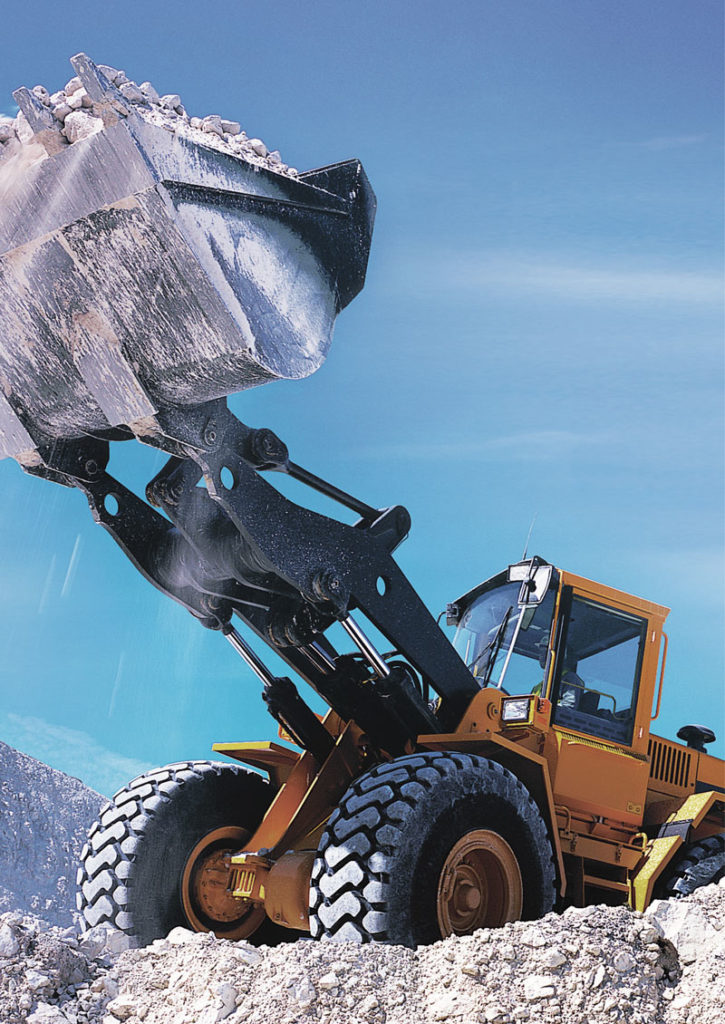India has the potential to become a global hub for manufacturing and exports of construction equipment
The Indian Construction Equipment Industry boasts of a large presence of global CE OEMs alongside domestic players, which has led to enhanced focus on R&D and innovation in the sector.

Can India emerge as a manufacturing hub for Construction Equipment Vehicles (CEVs) given the ‘Make in India’ initiatives for productive manufacturing?
The Indian Construction Equipment Industry boasts of a large presence of global CE OEMs alongside domestic players, which has led to enhanced focus on R&D and innovation in the sector. ‘State-of-the-Art’ manufacturing technologies being used by CE OEMs in India is at par with the world. Further, it is also important to note that domestically manufactured equipment is being exported to major markets across the globe, including the EU, UK and US, implying that Indian construction equipment meet global quality standards and are well-accepted in advanced markets globally. Needless to say, this is a clear indication that India has the potential to become a global hub for exports of construction equipment.
It is also essential to develop a robust supply chain operating ecosystem with the objective of eliminating supply chain disruptions, increasing localization levels & ensuring world-class quality standards at an optimal cost of procurement and operation. The Indian CE Industry has taken a number of initiatives towards indigenizing its products. Almost 90% of CE products by volume are more than 50% indigenized already. However, a key challenge still faced by the industry is its high dependence on import of precision components, hydraulics, undercarriages and electricals/electronics. ~25-40% components (by value) are imported from component manufacturers based in Korea and Japan. Investment in mother technologies therefore needs to be incentivized under Government’s AatmaNirbhar Bharat initiative, through incentive schemes such as PLI (Production Linked Incentive), etc., to help the CE Industry realize its Vision 2030 and make India a manufacturing and export hub for CE.
The earthmoving equipment and road construction equipment account for close to 70% of India’s construction equipment market. Do the government initiatives on infrastructure development make a real ground-level change and reflect a shift in policy?
The Government’s enhanced focus on infrastructure development is evident from the fact that CAPEX has been enhanced by 35% YoY to Rs. 7.5 Lakh Crore in the Union Budget FY23. Further, the Rs. 111 Lakh Crore National Infrastructure Pipeline, a key demand driver for the CE Industry, which was launched initially with 6835 projects has been expanded to cover more than 9300 projects worth Rs. 142 Lakh Crore as on date. Most of these projects, currently under the Implementation stage, are being funded by the Govt. with only a small portion being accounted for by Public-Private Partnership models.
The Government has also taken some key initiatives towards fast-tracking execution by ensuring better coordination between Govt. departments and Ministries through the recently launched Rs. 100 Lakh crore Gati Shakti National Master Plan as well as strengthening the financial ecosystem in the infrastructure sector through the establishment of NaBFID. All these steps reflect a policy shift and the Government’s willingness to initiate structural reforms in the infrastructure sector.
Is the high cost of fuel impacting the sector? The economy has started seeing some green shoots how will it affect the performance of the CE sector in the coming months?
Rising fuel prices have adversely impacted the industry. With increasing fuel prices, the cost of running equipment has been going up, which dampened the construction activity in the country. This, in turn, affected the demand for equipment. The CE industry has taken initiatives to reduce dependency on fossil fuels and move towards alternative fuels. ICEMA has formed a group of subject experts who are deliberating on the possibility of using alternative fuels like bio-diesel for construction equipment vehicles and a proposal for the same has also been prepared. A Bio-diesel summit was organized by ICEMA in January this year wherein the recommendations of the group for adoption of bio-diesel in the CE industry were presented to Nitin Gadkari, Minister for Road Transport & Highways, who has been a great proponent of alternative fuel and has been encouraging the industry to switch to cleaner fuels.
With the economy witnessing some green shoots, the outlook for the CE Industry remains positive in the coming months. However, high fuel cost and inflationary pressures (across commodities) act as a dampener to growth.
Do you think there is a need for rapid infrastructure creation and the opportunities in creating quality infrastructure to help the sector? Many of the sectors are stuck in delays and non-payments, is the demand consistent?
‘Infrastructure creation’ is the backbone of economic growth for any nation, including India. In India, Infrastructure investment has a multiplier effect of 2.5 which clearly signifies the importance of infrastructure development for the country.
The announcement of a Rs. 7.5 Lakh Crore CAPEX, up 35% YoY, is therefore a step in the right direction and a testimonial of the Government’s enhanced focus on Infrastructure creation.
The National Infrastructure Pipeline offers a huge opportunity for creating world class infrastructure in the country.
However, implementation of planned infrastructure projects in a timebound manner is critical for creating a sustained demand for construction equipment. Highway Construction was down (-)57% in Q1, FY23 vs. Q4, FY22. Persisting high inflation in input materials like sand, cement, steel, fuel etc. led to contractors going slow on execution. Some payment delays from the State Governments have also adversely impacted sentiments. These challenges need to be addressed to ensure a sustained demand in the Industry.
What is your outlook for the CE sector in terms of sales?
The demand outlook for the construction equipment sector remains robust with MoRTH targeting 18,000 km of national highway construction in FY22-23 at a pace of 50km per day and expanding the national highway network to 2 lakh km by 2025. Further, the Gati-Shakti National Master Plan will enhance better coordination between Ministries and ensure faster and smoother implementation of Infrastructure projects.
Demand for Indian manufactured CEs also remains robust globally, with exports witnessing a growth of 60% YoY in FY22. Focus on exports by OEMs is expected to continue in the coming months. The outlook for the industry therefore looks positive and provided that there are no unprecedented incidents in the near future, Industry sales figures may touch 100,000 units in FY23.
How is the CE sector dealing with the new emission norms? Will it help in bringing cost efficiencies to the sector?
CEV Stage-IV emission norms for Construction Equipment Vehicles (CEVs) have already been implemented from April 1, 2021. CEV Stage-V norms will be implemented from April 1, 2024. On par with global standards, all the Safety requirements for CEVs are also being implemented in two phases, aligning with Stage-IV and Stage-V emission norms. Advanced manufacturing facilities, skilled manpower and state of the art technology will enhance the demand for the CEVs, in both in domestic and global markets. The transition to CEV Stage IV norms has also resulted in a price increase for wheeled equipment which has impacted demand adversely, albeit temporarily. We understand that the market will take some time to adjust to this price increase.
How will the higher raw material price impact manufacturing?
Growth of the Indian Construction Equipment industry has been severely impacted by spiraling raw material prices. In particular, the steep increase in the price of steel has placed immense pressure on the manufacturing cost of construction equipment. Most component suppliers of the Indian CE industry comprise MSMEs who often do not have the bandwidth to absorb an increase in raw material prices. The rise in raw material prices combined with increased cost of finance have led to increased input prices for the Indian CE industry. Apart from a direct impact, the rise in prices of bitumen, coal, cement and fuel have led to a slowdown in the implementation of road construction projects, one of the largest end-users of construction equipment.
 How prepared is India’s CE sector in embracing new technologies like IoT and automation?
How prepared is India’s CE sector in embracing new technologies like IoT and automation?
Through the in-house R&D and technical support from the principals, CE sector OEMs are continuously upgrading their products with all the latest technology prevailing globally. In this journey, reputed institutes like IITs and IISC are also supporting the OEMs. Further, disruptive technologies in Supply Chain management, such as Blockchain, Artificial intelligence (AI), Machine learning, Robotics, Internet of Things (IoT), Augmented reality, etc. are already being implemented in the CE Industry. The growth envisioned for the Indian CE Industry will not only help generate a large number of job opportunities in the near future but will also help create a huge skilling opportunity in the sector on account of advancement of technology in the CE Industry.
One example is the extensive usage of Telematics in Construction Equipment. ICT (Information & Communication Technology) enablement helps generate data pertaining to equipment usage hours, efficiency of usage, location, alarms for system malfunction and so on. These data points / reports help in preventive maintenance, better utilization and monitoring of assets, and geofencing. Another example would be the use of Fleet Management systems for optimal utilization of assets at Project sites. In Mining applications, there is increased use of Autonomous Drives and higher usage of Technology in Safety Systems.
With investment in new technology / advancement in CE (e.g. use of advanced telematics, alternate fuel technology, enhanced software to measure efficiency, etc.), it is essential to have skilled personnel operate machines so as to ensure efficient and effective usage of equipment across construction projects.
How are the exports faring? Is there any revival in the international market giving the Indian manufacturers a chance to export and maximize their production capacities?
Indian CE industry recorded a year-on-year increase of 60% in exports during FY 2021-22. With the new CEV IV emission norms now completely adopted by the industry, there are significant opportunities for the Indian CE industry to tap into developed markets.
Going forward, growth in Infrastructure investment will ultimately lead to technological advancement in the CE industry in India. For example, telematics is being extensively embedded by Indian CE manufacturers, especially in Mining Equipment; Advanced Driver Assistance Systems (ADAS) are being implemented to ensure higher levels of safety in road construction as well. These advancements will enable the Indian CE industry to attract a larger share of the global markets.
In view of these developments, major CE OEMs in India are planning capacity expansion to target export markets.
Hits: 8








